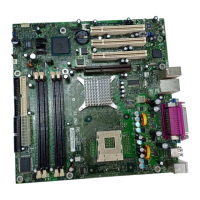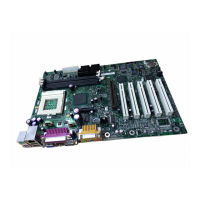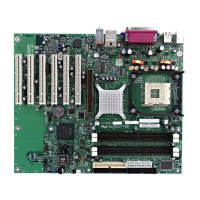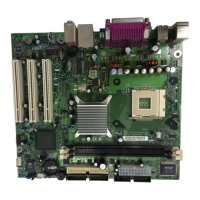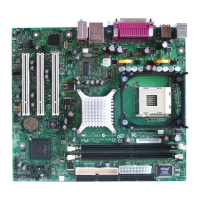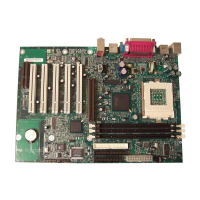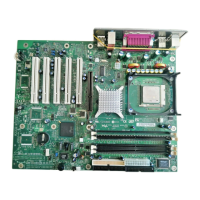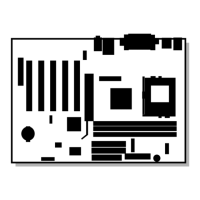Intel Desktop Board D850GB Technical Product Specification
24
1.6.3 IDE Support
1.6.3.1 IDE Interfaces
The ICH2’s IDE controller has two independent bus-mastering IDE interfaces that can be
independently enabled. The IDE interfaces support the following modes:
• Programmed I/O (PIO): processor controls data transfer.
• 8237-style DMA: DMA offloads the processor, supporting transfer rates of up to 16 MB/sec.
• Ultra DMA: DMA protocol on IDE bus supporting host and target throttling and transfer rates
of up to 33 MB/sec.
• Ultra ATA-66: DMA protocol on IDE bus supporting host and target throttling and transfer
rates of up to 66 MB/sec. ATA-66 protocol is similar to Ultra DMA and is device driver
compatible.
• Ultra ATA-100: DMA protocol on IDE bus allows host and target throttling. The ICH2 Ultra
ATA-100 logic can achieve read transfer rates up to 100 MB/sec and write transfer rates up to
88 MB/sec.
✏ NOTE
ATA-66 uses faster timings and requires a specialized cable to reduce reflections, noise, and
inductive coupling. The higher quality cable that supports ATA-66 DMA also supports ATA-100
DMA operation and is required for top performance from ATA-100 devices.
The IDE interfaces also support ATAPI devices (such as CD-ROM drives) and ATA devices using
the transfer modes listed in Section 4.4.4.1 on page 99.
The BIOS supports logical block addressing (LBA) and extended cylinder head sector (ECHS)
translation modes. The drive reports the transfer rate and translation mode to the BIOS.
The D850GB board supports laser servo (LS-120) diskette technology through its IDE interfaces.
An LS-120 drive can be configured as a boot device by setting the BIOS Setup program’s Boot
menu to one of the following:
• ARMD-FDD (ATAPI removable media device – floppy disk drive)
• ARMD-HDD (ATAPI removable media device – hard disk drive)
For information about Refer to
The location of the IDE connectors Figure 11, page 59
The signal names of the IDE connectors Table 41, page 63
BIOS Setup program’s Boot menu Table 74, page 106
